40m small-loop, 20m vertical, 2m beam and a KX3 system
We operated a small ARRL Field Day operation in Marshall, Virginia operating as KX4O 1B VA in QRP battery class.
Highlights include:
- One Asymmetrical Hatted Vertical Dipole antenna set to 20m,
- One 20-80m small loop antenna used for 40m (40m works best),
- One Arrow Antennas 2m beam to send out NTS messages,
- One 100 AH Lithium-Ion battery to power everything.
We had several goals for this portable event. While we would have liked to operate the entire 27 hours, we still achieved contacts on 20m with the AHVD, 40m with the small loop and managed to get some NTS messages passed using packet… a first for us. Our theme this year was to use only antennas on tripods with no use of masts or tree supports.
Battery bummer
Unfortunately the nominal ~15 or so volts lithium battery was charged only to 14.4 volts which meant the capacity was less than 10%. This still gave us over 5 hours operating time including powering the Dell D610 laptop and an inefficient linear 5 volt regulator for the USB hub. We thought very hard about cranking the generator thereby reducing our multiplier from 5 to 2, but decided to call it instead.
NTS messages via packet radio
Our local club operates the FARA7 packet node with FBBS9 nearby. Chuck, N4YXW, manages the NTS relay from our club’s main field day site so I used his experience as a guide. Our location in Marshall, Virginia is within easy 2m reach of the FARA7 hilltop system. For several weeks I tried all sorts of different combinations of Outpost, RMS Express, soundcard TNCs and others. In the end none worked together; There was always one thing holding back the system synergy. Frustrating. What finally worked was a hybrid approach using throwback gear including an old Icom IC-2AT (with thumbwheels) and a power hungry AEA PK-88 terminal node controller.
I never was able to reach the FARA7 packet node from my house, but at the field, using a terminal program, the 2AT and the Arrow Antennas beam, I instantly connected with no problem. Then I connected to FBBS9… again no problem. All this with 1.5 watts from the IC-2AT using internal batteries. Insufficient ERP was no longer an issue.
Of all the programs out there, Outpost seems to have the best hope of negotiating the path through FARA7 to FBBS9 where we could then send “email” NTS messages straight away. However I could never get Outpost to connect through FARA7. So I finally used Outpost’s spiffy NTS message generator to format the NTS messages, copied them to the clipboard and then pasted them while I manually manipulated FBBS9 in a terminal program. This worked.
We managed to send one message to our section manager and five more to others. We would have sent more, but “Retry Exceeded” started popping up and we ran out of time.
Oh well. We are quite pleased with getting anywhere at all with field day NTS messages. 150 bonus points is 150 bonus points. We found a way that works and will build on this for next year.
This NTS via packet radio experience had rekindled my interest in packet and especially the store and forward advantages. I look forward to seeing where packet radio survives and thrives through logical evolution. The Kentucky Packet Network folks seem to be one example of logical evolution.
Photo highlights of KX4O 1B-Battery VA
The 40m small loop & the Elecraft PX3
The Elecraft PX3 spectral display option for the KX3 is a marvelous tuning tool for the small loop antenna. The 10 dB return loss (SWR <2.0) bandwidth of the loop is only about 4 kHz in the 40m band. The “listening” bandwidth is a bit wider. The pervasive noise on 40m easily reveals the current frequency of the loop via the bump in signal strength at and around the antenna’s oscillating frequency. Adjusting with the dc motor controller moves the wave shape up and down allowing one to center on a desired signal riding atop the noise in the spectral display. Fine tuning with the built-in SWR meter is the last step keeping in mind the “center” of the LSB channel is offset from the “tune” frequency. Using such a narrow bandwidth antenna is a new paradigm for us, but the PX3 makes this process more practical. Thanks Elecraft.
The 5-500 pF capacitor in the small loop antenna does, indeed, tune wide enough to cover 80 – 15m or so. Theory says 80m is very inefficient and the measured S11 is less than ideal. The upper bands do work, are wider bandwidth, and offer more utility for this particular build of the antenna. However, I suspect the many-to-one transformer I used to feed the loop works best only in the 40 and 30m bands. It is 20+ turns of magnet wire around two 2.4″ OD Type 43 toroid ferrites. The copper loop finishes the one-turn secondary of the transformer. This particular combination of toroids, ferrite material and turns ratio was a complete guess on my part. My driving assumption is if you are going to match 50 ohms to a dozen or so milli-ohms, you better have an appropriate transformer turns ratio exceeding 50:1. Mine turned into an as-many-as-possible:1 transformer. The result yields spectacular S11 (greater than 20 dB at the tuning frequency) on 40m with measured bandwidth (4 kHz) quite close to the theoretical (4.9 kHz). This suggests I managed loop losses well enough during loop construction.
20m coverage isn’t a problem this antenna needs to solve for this field day thanks to the AHVD (below). All we desired was a tripod mount antenna to adequately cover the 40m band. It appears this one does.
20m Asymmetrical Hatted Vertical Dipole (AHVD)
In stark contrast to the 40m small loop antenna, the Asymmetrical Hatted Vertical Dipole (AHVD) antenna offers profound bandwidth many times wider than the entire 20m band. Such is the case for 17-10m as well when dimensioned for those bands. We only cared about 20m this time around. Operating 20m was a wholly different experience from 40m where we never once had to touch the antenna tuner.
Regular contacts with the west coast from Virginia were logged using the 20m AHVD antenna.
Conclusion
As this field day was more an experiment than hard-core contesting, it was a nice study and comparison of two entirely different antenna approaches: full-size 20m and small loop 40m.
Beauty and the beast? You decide which is which.
Our desire to keep the multiplier at 5 resulted in shortened operating time due to the battery capacity miscalculation. We attained our objectives including:
- Tripod-only antennas
- 1B-Battery class
- Casual operating environment
- Field-test of new 40m small loop antenna
The school where we operated is surrounded by farms. It amazes us how much noise farm animals make.
Since we were effectively dead by Sunday morning, and since we did not make a contact with our W4VA club station, I drove there to participate in the remaining hours of that operation. It was a great weekend. With only 43 QSOs we still have a score about 10% of our main club with 1,910 QSOs. Very odd.
Hopefully Jason and I will try this again next year.
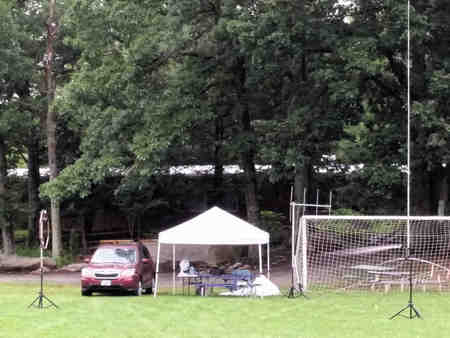
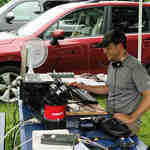
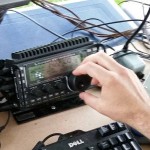
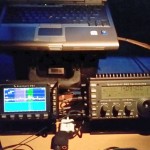
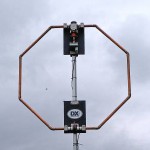
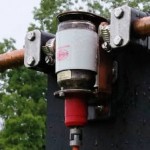
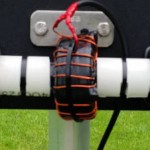
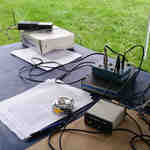
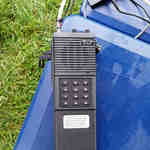
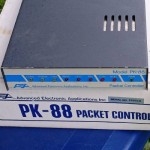
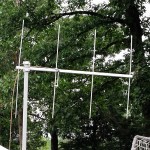
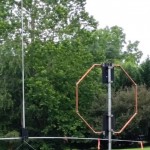
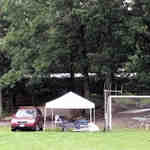
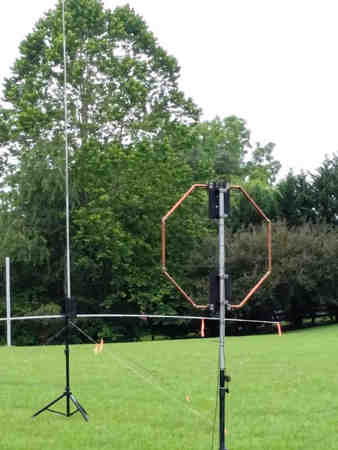
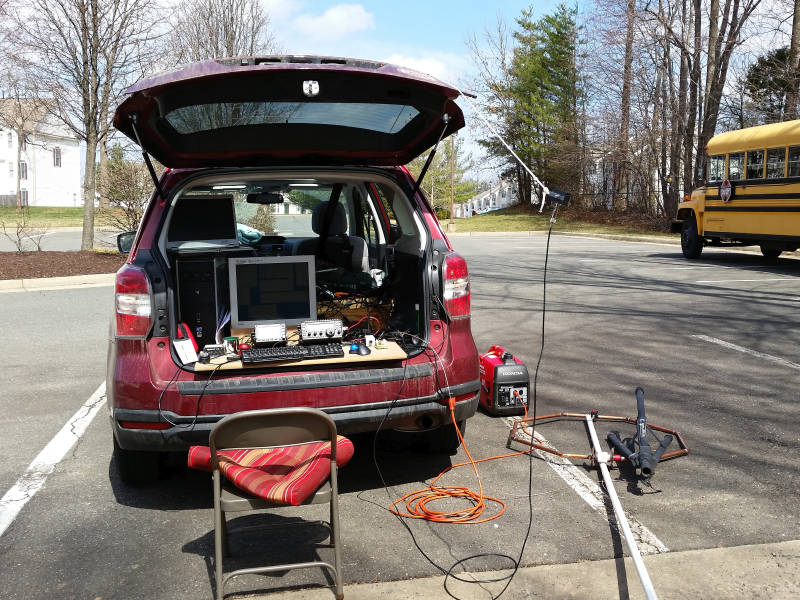
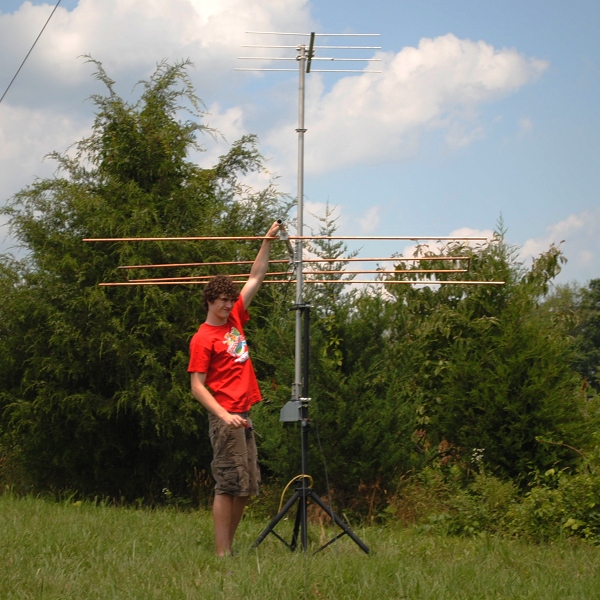
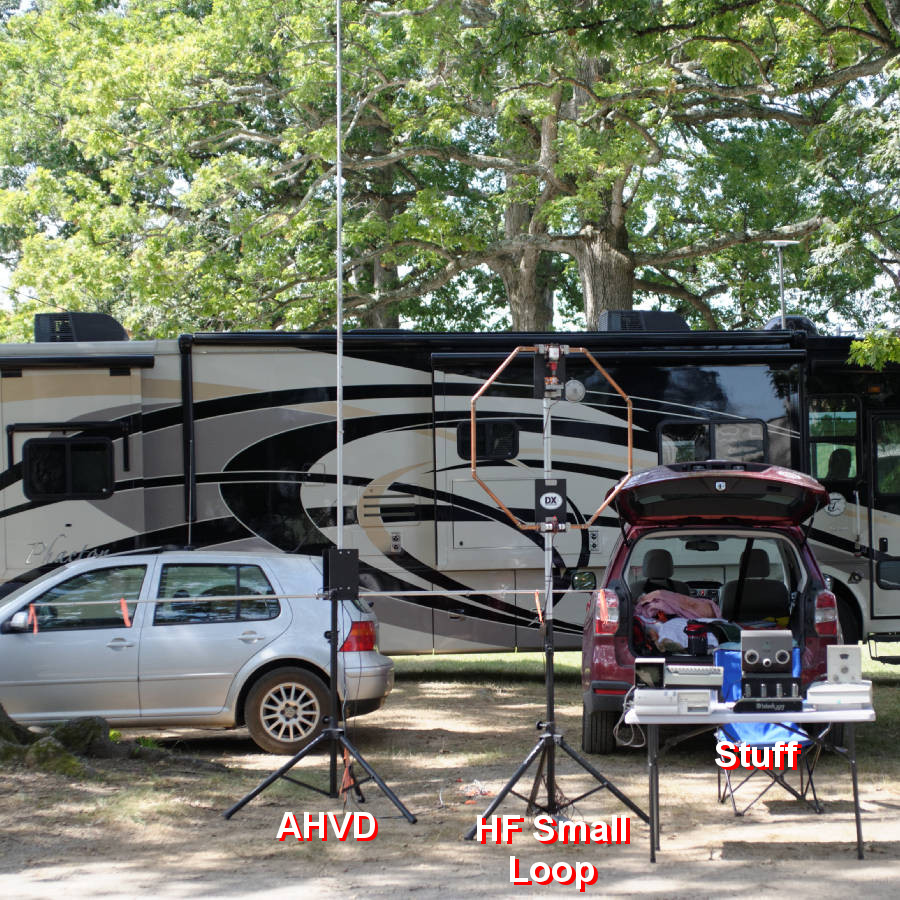
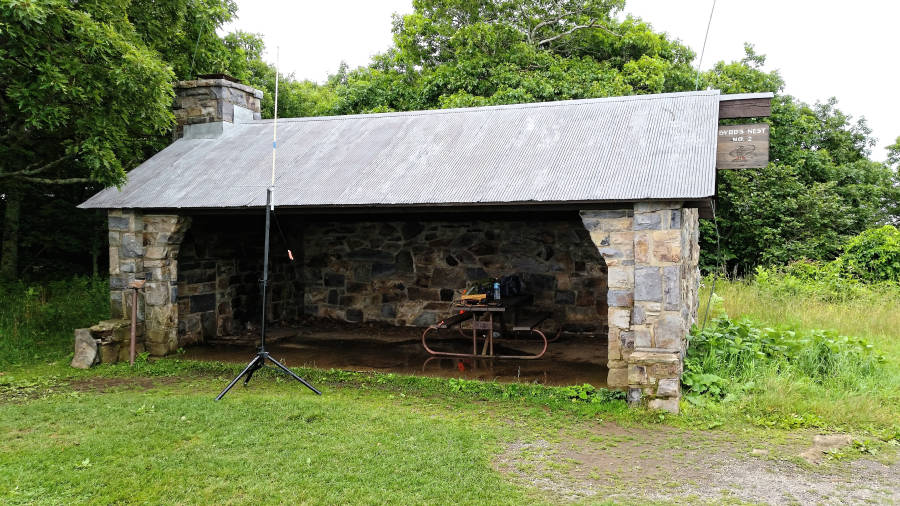
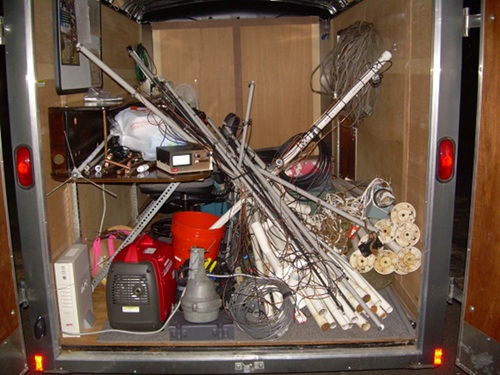
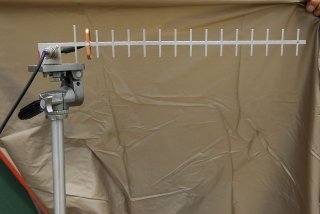
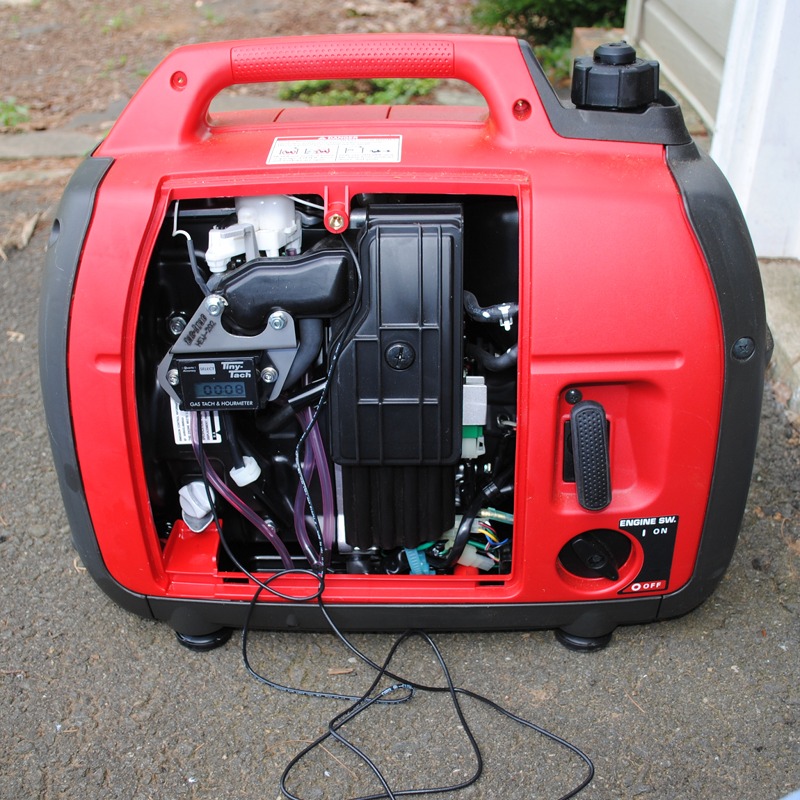
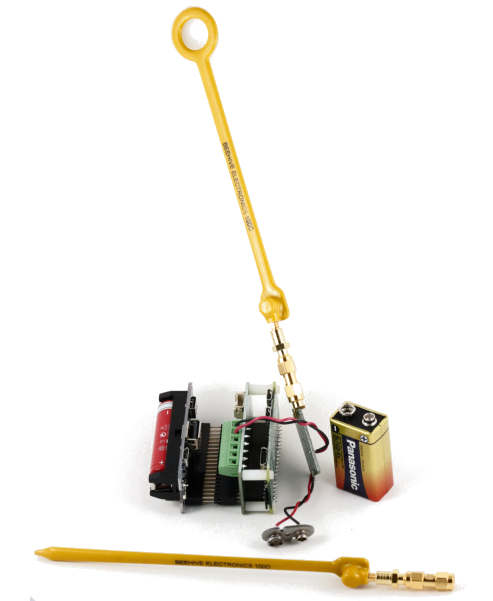
great article